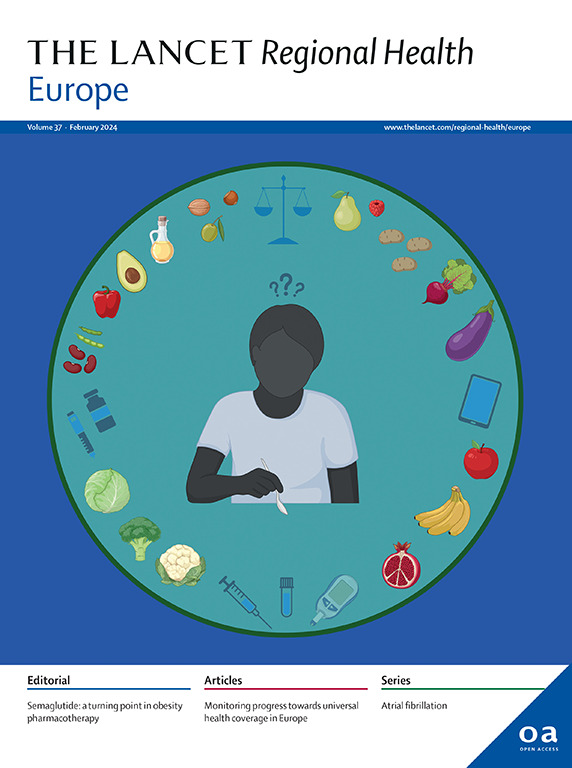比较创伤中氯胺酮和吗啡的护理镇痛(PACKMaN):一项随机、双盲、3期试验
IF 13
Q1 HEALTH CARE SCIENCES & SERVICES
引用次数: 0
摘要
护理人员经常使用镇痛药物治疗创伤后疼痛。吗啡是最常用的强力镇痛药。然而,它可能不是最好的选择,因为它可能降低血压,抑制呼吸,并有依赖的风险。氯胺酮可能是更好的选择,因为它起效快,副作用小。我们试图比较护理人员给予氯胺酮和吗啡对创伤后严重疼痛患者的临床疗效。方法spackman是一项双盲、随机对照、优势试验,在英国的两个地区救护车服务中心进行。符合条件的患者年龄为16岁或以上,有急性损伤,并且在0-10数值评分(NRS)中明确疼痛评分为7分或更高。我们排除了孕妇、囚犯、无法清晰表达疼痛评分的人以及缺乏能力的人。由研究编程人员准备的随机列表,采用排列,无分层,块随机化系统(可变大小块),以实现1:1的控制(吗啡):干预(氯胺酮)的总体比例。治疗包除了序列号不同外,外观相同。个体参与者随机化发生在主治护理人员打开治疗包时。吗啡的最大有效剂量为20 mg,氯胺酮的最大有效剂量为30 mg。负责治疗的护理人员通过静脉(或骨内)途径,以常规小剂量缓慢地给药,滴定治疗,直到患者报告足够的镇痛或因不良副作用而要求停止治疗。给药时间没有预先规定。主要结局是到达医院时疼痛强度差(SPID)评分的总和,使用患者报告的NRS评分计算。分析在意向治疗的基础上进行。PACKMaN已在国际临床试验注册中心注册(ISRCTN14124474)。spackman于2021年10月11日招募了第一位患者,并于2023年5月16日达到了招募目标。我们随机选取了449名参与者:219名(49%)接受氯胺酮治疗,230名(51%)接受吗啡治疗。氯胺酮组SPID评分为3.5 (SD 2.8),吗啡组SPID评分为3.4 (SD 3.0)。我们发现两种药物的疗效无显著差异(校正平均差为0.1,95%CI为- 0.4 ~ 0.6,p = 0.74)。两组严重不良事件发生率无显著差异[4(2%)氯胺酮;8(3%)吗啡]。没有与治疗相关的死亡。解释:医护人员在治疗急性严重创伤疼痛时,氯胺酮的镇痛效果并不优于吗啡。意外的不良事件很少发生。尽管使用了镇痛药,但许多患者在到达医院时仍然感到疼痛,这突出了进一步研究的必要性。packman项目由美国国家健康与护理研究所资助。本文章由计算机程序翻译,如有差异,请以英文原文为准。
Paramedic analgesia comparing ketamine and morphine in trauma (PACKMaN): a randomised, double-blind, phase 3 trial
Background
Paramedics frequently administer analgesic medications for pain following trauma. Morphine is the most commonly administered strong analgesic. However, it may not be the best option as it may lower blood pressure, depress respiration and there is a risk of dependency. Ketamine might be a better option due to speed of onset and favourable side-effect profile. We sought to compare clinical effectiveness of paramedic administered ketamine and morphine in patients with severe pain following trauma.
Methods
PACKMaN was a double-blinded, randomised controlled, superiority trial, conducted in two regional ambulance services in the UK. Eligible patients were 16 years of age or over, had an acute injury, and articulated a pain score of 7 or greater on a 0–10 numeric rating score (NRS). We excluded pregnant patients, prisoners, those unable to articulate a pain score and anyone lacking capacity. The randomisation list prepared by the study programmer, utilised a permuted, unstratified, block randomisation system (variable size blocks) to achieve an overall ratio of 1:1 control (morphine): intervention (ketamine). Treatment packs were identical in appearance, apart from their unique sequential number. Individual participant randomisation occurred when the attending paramedic opened the treatment pack. The maximum available dose of morphine was 20 mg while the maximum available dose of ketamine was 30 mg. The treating paramedic administered the trial drug slowly, in regular small aliquots, via the intravenous (or intraosseous) route, titrating treatment until the patient reported adequate analgesia or requested that treatment stop due to undesired side effects. Timing of drug administration was not prespecified. The primary outcome was the Sum of Pain Intensity Difference (SPID) score on arrival to the hospital, calculated using patient reported NRS scores. Analysis was performed on an intention to treat basis. PACKMaN is registered with the International Clinical Trials Registry (ISRCTN14124474).
Findings
PACKMaN recruited its first patient on 10/11/2021 and achieved its recruitment target on 16/05/2023. We randomised 449 participants: 219 (49%) received ketamine and 230 (51%) received morphine. The SPID score was 3.5 (SD 2.8) for ketamine and 3.4 (SD 3.0) for morphine. We found no significant difference in efficacy between drugs (adjusted mean difference 0.1, 95%CI −0.4 to 0.6, p = 0.74). There was no significant difference in the incidence of serious adverse events [4 (2%) ketamine; 8 (3%) morphine]. There were no treatment related deaths.
Interpretation
Ketamine did not provide superior analgesia than morphine when used by paramedics to treat acute severe trauma pain. Unexpected adverse events occurred infrequently. Despite analgesia, many patients still experienced pain on arrival at hospital, highlighting the need for further research.
Funding
PACKMaN was funded by the National Institute for Health and Care Research.
求助全文
通过发布文献求助,成功后即可免费获取论文全文。
去求助
来源期刊

Lancet Regional Health-Europe
Multiple-
CiteScore
19.90
自引率
1.40%
发文量
260
审稿时长
9 weeks
期刊介绍:
The Lancet Regional Health – Europe, a gold open access journal, is part of The Lancet's global effort to promote healthcare quality and accessibility worldwide. It focuses on advancing clinical practice and health policy in the European region to enhance health outcomes. The journal publishes high-quality original research advocating changes in clinical practice and health policy. It also includes reviews, commentaries, and opinion pieces on regional health topics, such as infection and disease prevention, healthy aging, and reducing health disparities.
 求助内容:
求助内容: 应助结果提醒方式:
应助结果提醒方式:


